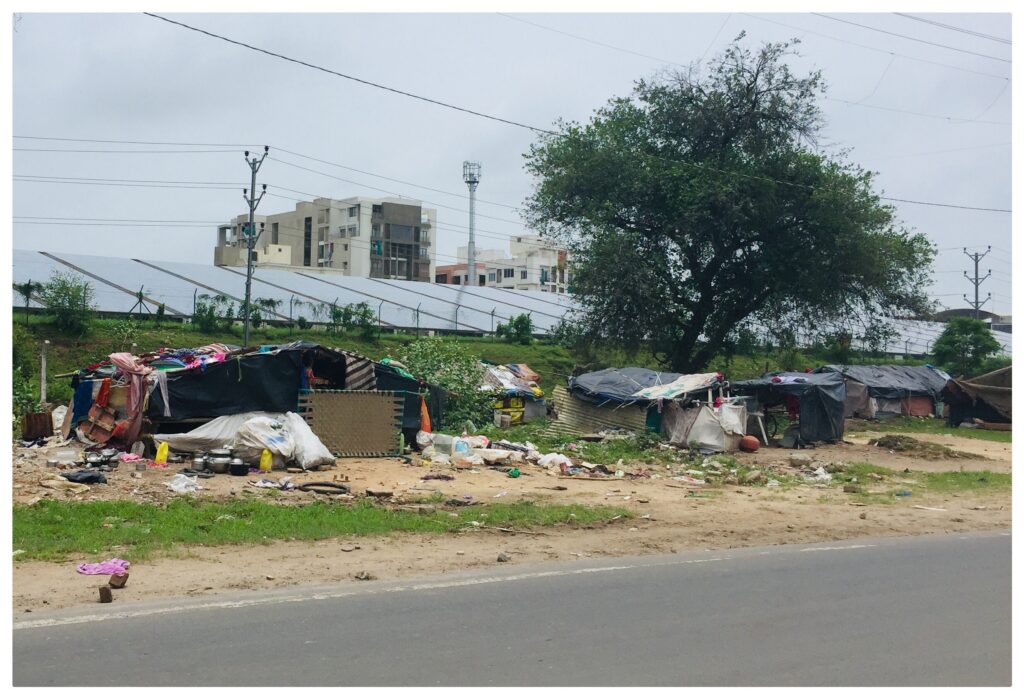Why it matters to have fresh food
This sounds almost silly, isn’t it? In my humble opinion, access to healthy food should be a human right. But for too many of us, this is a daily struggle and concern. The problem of limited access to fresh produce in some areas is a growing concern. Food deserts are communities or regions with limited access to affordable, nutritious foods. This can be the result of economic disparities and lack of infrastructure in those areas, resulting in inadequate distribution and availability of healthy food options. Food deserts have been linked to higher rates of obesity, diabetes, and heart disease in the individuals living in them.
It’s estimated that over 23.5 million people live in food deserts in the United States alone, with over 2.3 million children living in these areas. And not only in the United States, but these numbers are also growing worldwide!
Recent unfortunate events, such as the train derailment in Ohio, devastating fires at chicken production plants, and other environmentally damaging catastrophes worldwide have only made the situation worse. Food deserts will be especially hard-hit by these events, as fresh produce is becoming scarce and can be even harder to come by in areas that are already food insecure. The vast areas that are threatened by these incidents can even cause food shortages in other far distant areas.
It’s clear that access to fresh produce is essential for the health and well-being of individuals and communities, yet too many are still living in food deserts and lack access to fresh foods. Let’s dive in deeper and let us ask:
What are the Root Causes of Food Deserts
Food deserts happen when people do not have easy access to fresh food. This can be because of poverty, not having vehicles or public transportation to get food, or stores that are just too far away. Social inequalities also play a role, as communities of color are disproportionately affected by food insecurity. These concrete-made food deserts often have fewer stores that offer fresh produce and more convenience stores that sell heavily-processed, unhealthy foods.
Additionally, the cost of healthy food is often much higher in food desert areas due to a lack of competition among retailers. This means the people living in these areas are exposed to higher prices for fresh foods. As long as ready-to-microwave foods are cheaper than fresh vegetables, our food system is completely unsustainable and should be our all concern.
The inaccessibility of fresh food is also more likely to be near pollution sources, such as highways and factories, which can contaminate the air around them and make it harder to start initiatives to grow healthy food.
Not always, but often, people are not enough aware and educated about the importance of healthy food. Or worse – they just don’t care! It seems, that neither the food industry nor politics are enough interested to change the situation drastically. So, what is the price we all pay?

The Health Consequences of Food Deserts
Living in a food desert has serious health consequences that cannot be overlooked. Food insecurity can lead to increased rates of obesity, diabetes, and heart disease. People living in these areas are exposed to fewer healthy foods and more heavily-processed, unhealthy options. This results in an excess of calories with fewer vitamins, micronutrients, and dietary fiber, which can contribute to malnutrition and increased risks for diseases like diabetes and an overall bad immune system.
Studies have shown that food insecurity is also associated with higher levels of stress and depression, which can further contribute to even more serious physical and mental health issues.
I honestly don’t believe that somebody has an estimated idea about the long-term costs of malnutrition in our society. Unfortunately, it’s a proven fact that spending money on wars is easier to get approved, than spending money on food projects. It’s on us to change that!
Solutions to Address Food Deserts
Parts of society have come up with different ways to help affected people get fresh food in food deserts. These ideas include mobile markets, where trucks bring healthy food to neighborhoods; community gardens, where people grow their own vegetables; and farm-to-school programs, which can get fresh produce from local farms into school cafeterias.
Many NGOs and private initiatives have developed ways to help people living in such areas access fresh produce. One of the most promising solutions is to provide food deserts with “food hubs”, which are places where people can buy fresh food that has been sourced from local farms. Food hubs can also provide education on nutrition and cooking, which can help people make better decisions about their diets.
The Role of Policy and Advocacy
Policy and advocacy play an important role in addressing food deserts. This includes lobbying for better public transportation, zoning laws that promote healthy food retail, and other measures that can help make fresh produce more accessible. But to expect immediate and perfect solutions from policymakers would be unrealistic. Food deserts are complex problems that require the collective effort of different sectors and stakeholders, including policymakers, corporations, nonprofits, local communities, and educated individuals.
It’s also important to remember that food insecurity is a symptom of deeper socio-economic and environmental issues. To truly address food deserts, we need to focus on changing the underlying social and economic conditions that create them. This means investing in communities, creating jobs, and providing access to education, healthcare, and other opportunities.
One of the most effective ways to get involved in local and national advocacy efforts to combat food insecurity and promote food justice is to become informed, volunteer at food banks and pantries, donate to organizations that are helping those in food deserts, and advocate for policies that promote access to healthy foods. By working together, we can help create a healthier future for everyone.

And now what?
Food deserts are a major issue facing many communities today. Food insecurity can lead to serious health consequences and limit people’s access to fresh produce, which is essential for healthy diets. Solutions like mobile markets, community gardens, and farm-to-school programs have been developed in order to help those living in food deserts access healthier foods.
Policymakers must also play an important role by investing in local communities and creating jobs that provide opportunities for everyone.
We all have the power to make a difference – follow us on our social media channels as we fight against food insecurity and for better education about nutrition and a healthy lifestyle!

